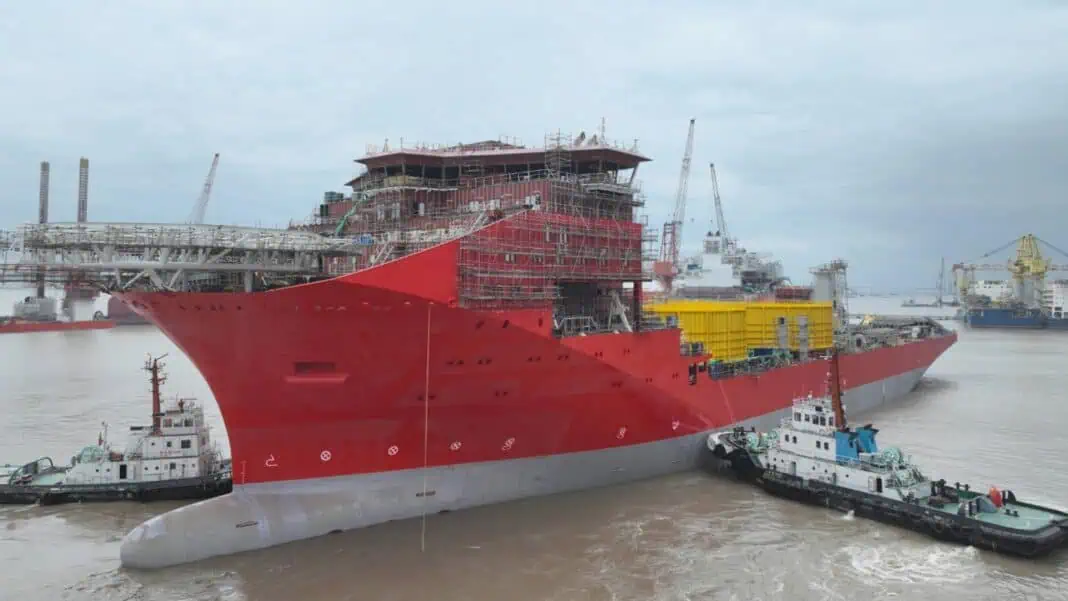Jan De Nul Group has launched its newest cable-laying vessel, Fleeming Jenkin, which will be deployed to install subsea cables supporting the global transmission of renewable energy.
With an extraordinary loading capacity of 28,000 tonnes, Fleeming Jenkin sets a new benchmark as the world’s largest cable-laying vessel. The ship has been designed to handle the growing scale and complexity of offshore wind and interconnection projects, ensuring efficient, high-capacity cable installation in deep and challenging waters.
The launch took place by flooding the dry dock at the China Merchants Heavy Industry Haimen shipyard in China. The final vessel construction phase now begins, including sea trials. Delivery of the vessel is scheduled for the second half of 2026.
Wouter Vermeersch, Director Subsea Cables Offshore Energy at Jan De Nul said, “the Fleeming Jenkin combines all the cable installation expertise we have built up over the past fifteen years. The entire vessel and the technologies on board were designed by our in-house specialists. The result is a vessel that operates very efficiently, reducing both the cost price and the ecological footprint of our projects.”
First assignment: 2,800 kilometres of subsea cables for TenneT’s 2GW projects
Once operational, the Fleeming Jenkin will immediately start her first assignment: the 2GW Program by TenneT, the grid operator for the Netherlands and large parts of Germany. This 2GW Program introduces a new generation of offshore grid connection systems that can each transmit up to two gigawatts. This is more than double the capacity of existing connections, usually between 700 and 900 megawatts. For comparison, an average nuclear power plant typically generates between 1 and 1.6 gigawatts. Fleeming Jenkin will install export cables on four of these 2GW connections, bundling and laying four cables together. This results in a total of more than 2,800 kilometres of cable being installed over a distance of more than 700 kilometres.












